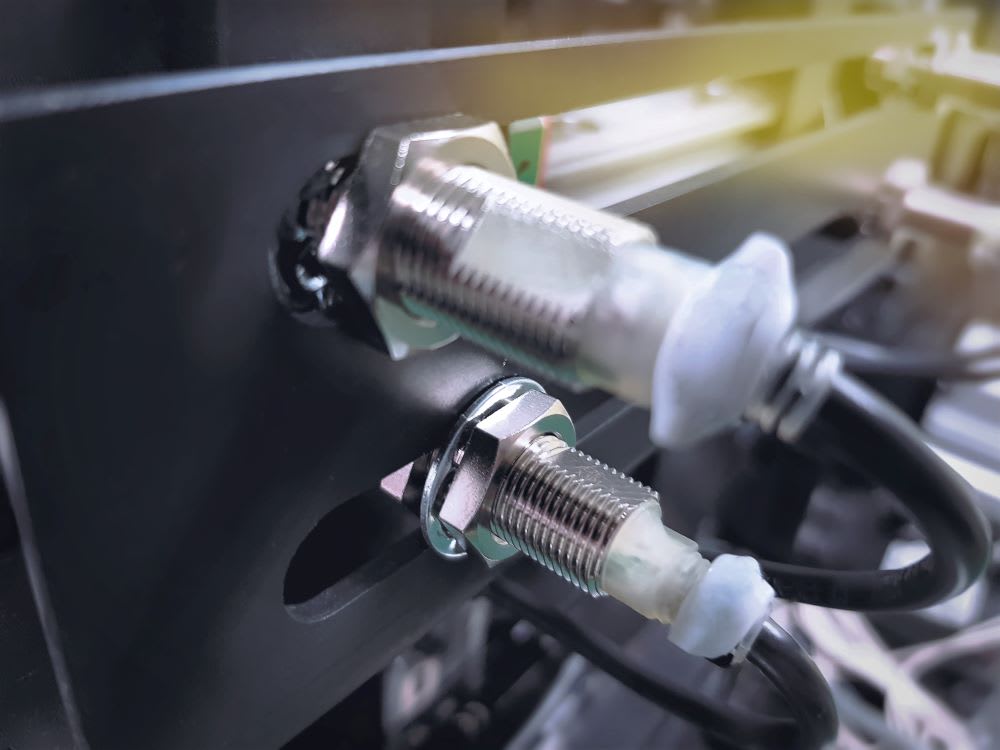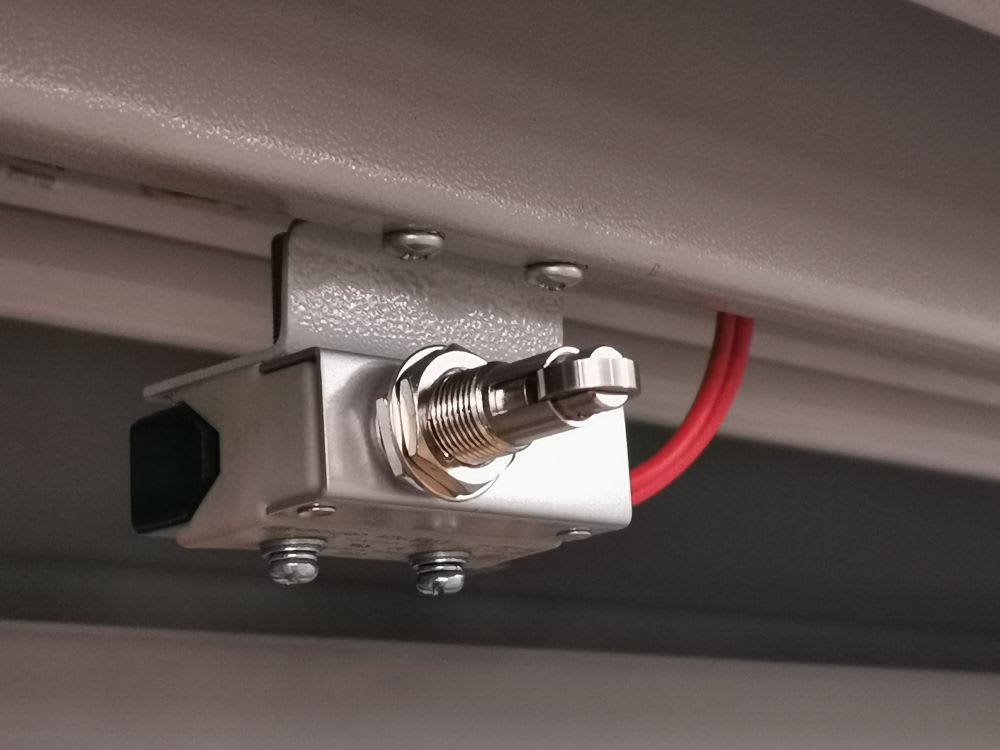- Published 19 Apr 2024
- Last Modified 19 Apr 2024
- 5 min
Elevating Mine Safety: The Essential Role of Proximity Sensors
Proximity sensors can help reduce the rate of accidents in the hazardous Australian mining industry. Discover more solutions for increasing mine safety with RS.

With the mining industry being such a significant cornerstone of the Australian economy, much attention has been paid to the hazardous, risky nature of the work involved. Companies are constantly under pressure to elevate and ensure heightened mine safety measures for workers, especially when under the careful scrutiny of the public.
Advanced technology, such as proximity sensors, plays a crucial role in safeguarding both equipment and personnel. These sensors are pivotal in creating safer mining environments in Australia, driving the mining industry forward while still maintaining high environmental monitoring and safety standards.

What are Proximity Sensors, and How Do They Work?
Proximity sensors are innovative devices designed to detect the presence of nearby objects without any physical contact. Through various technologies such as inductive, capacitive, ultrasonic, and photoelectric methods, these sensors can determine the proximity of objects with high precision. For example, advanced pressure sensors can detect even the slightest changes in air and water pressure, allowing workers to adapt operational plans accordingly. Whereas vehicle collision avoidance systems in mines utilise ultrasonic and radar-based proximity sensors to detect obstacles, significantly reducing the risk of accidents. This helps to prevent collisions and other potential accidents while also enhancing operational efficiency.
The Critical Role of Proximity Sensors in Enhancing Mine Safety
In Australian mines, which often operate in remote and challenging environments, the use of inductive proximity sensors has become particularly prevalent. Inductive proximity sensors use a high-frequency magnetic field to detect metal objects nearby, which is extremely relevant in an industrial environment teeming with heavy machinery.
These sensors are utilised in a variety of applications, from monitoring the position of large vehicles and equipment to ensuring that no personnel are in harm's way during blasting operations. For instance, in the iron ore mines of Western Australia, proximity sensors on drilling rigs and earth-moving equipment help maintain safe operating distances, reducing the risk of collisions in the vast open-pit mines.
Moreover, the integration of IoT technology with proximity sensors allows for the collection and analysis of data on equipment proximity incidents, offering insights that can be used to further improve safety protocols and training. This technology also enables remote monitoring of equipment and personnel, a crucial feature in the expansive and often isolated Australian mining landscape.
Integrating Proximity Sensors and Motor Controllers for Increased Mining Safety
Proximity sensors are often just the first step in a complex system with detection and alert capabilities. Motor controllers regulate the next step in operating machinery used in mining operations, adjusting speed, torque, and direction based on the input from proximity sensors. In Australia's mining operations, motor controllers are used extensively to manage the operation of conveyor belts, pumps, and ventilation systems, ensuring they operate within safe parameters.
This collaboration between motor controllers and proximity sensors enhances machinery safety, automatically adjusting or shutting down machinery before an incident occurs. For example, if a proximity sensor detects an obstacle or personnel within a hazardous area around heavy machinery, the motor controller can immediately slow down or stop the machinery to prevent an accident. This integrated approach is particularly valuable in the confined spaces of underground mines in Australia, where the risk of accidents is higher.
Overcoming Installation and Operational Challenges
Adapting these advanced technologies to the harsh and variable conditions of Australian mines presents unique challenges. The rugged landscape, dust, and extreme temperatures can affect proximity sensor performance if not shielded against mud, dust, debris, or other fine particulates in the air.
Solutions include using dedicated sensors designed for harsh environments and implementing rigorous maintenance schedules to ensure reliability. Australian mining companies should also conduct thorough site assessments to determine the optimal placement of sensors and motor controllers, ensuring they provide effective safety measures without impeding operations.
The Future of Mine Safety with Advanced Sensing Technologies

Innovations like IoT-enabled sensors and AI for predictive analysis, in particular, are set to redefine mining safety in years to come. These technologies offer the potential for even greater advancements in safety outcomes, with sensors that can predict and automatically respond to potential hazards before they pose a risk.
The integration of IoT technologies allows for even greater monitoring capabilities, predictive maintenance, and operational efficiencies. With IoT, sensors not only provide data for immediate safety responses but also contribute to long-term analytics for improving safety protocols and equipment design.
Regulatory bodies, such as the Australian Government’s Department of Industry, Science, and Resources, and state-based departments, like the Queensland Department of Resources, also play a crucial role in setting safety and environmental guidelines for the industry. These authorities enforce legislation that ensures mining operations protect workers, communities, and the environment, as well as provide funding for research and development projects focused on mine safety technologies and more. They also promote innovation and technology adoption to meet these objectives, recognising the value of proximity sensors in mitigating risks associated with mining operations.
Enhancing Mine Safety with RS Australia
As the mining industry continues to evolve, so too does the technology designed to ensure its safety. RS Australia is at the forefront of this evolution, offering a wide selection of proximity sensors and motor controllers designed to meet the rigorous demands of mining operations. We are committed to providing the mining sector with the tools it needs to operate safely and efficiently. Browse our top-rated products below, or explore our full catalogue of automation & control gear on our website, including flow meters and VFDs.
Popular Proximity Sensor Brands
Carlo Gavazzi
Carlo Gavazzi's proximity sensors are praised for their robustness and versatility, suitable for a wide range of industrial applications including the demanding environments of mining.
Telemecanique Sensors
Telemecanique Sensors stand out for their innovation and performance, offering proximity sensors that ensure operational safety and efficiency in mining and other industrial sectors.
Related links
- Mining Efficiency: How Variable Frequency Drives Are Changing the Game
- The Role of HVAC Systems in Mining Air Quality & Humidity
- The Role of Thermal Overload Relays in Mining Safety
- Under Pressure: How Advanced Pressure Sensors Are Transforming Mine Safety and Operational Efficiency
- Mining Industry Solutions: Personal Protective Equipment (PPE) for Mining
- The Role of Connectors in the Mining Industry
- Achieving Environmental Management in Sustainable Mining
- The Critical Role of Push Button Switches in Mining Operations